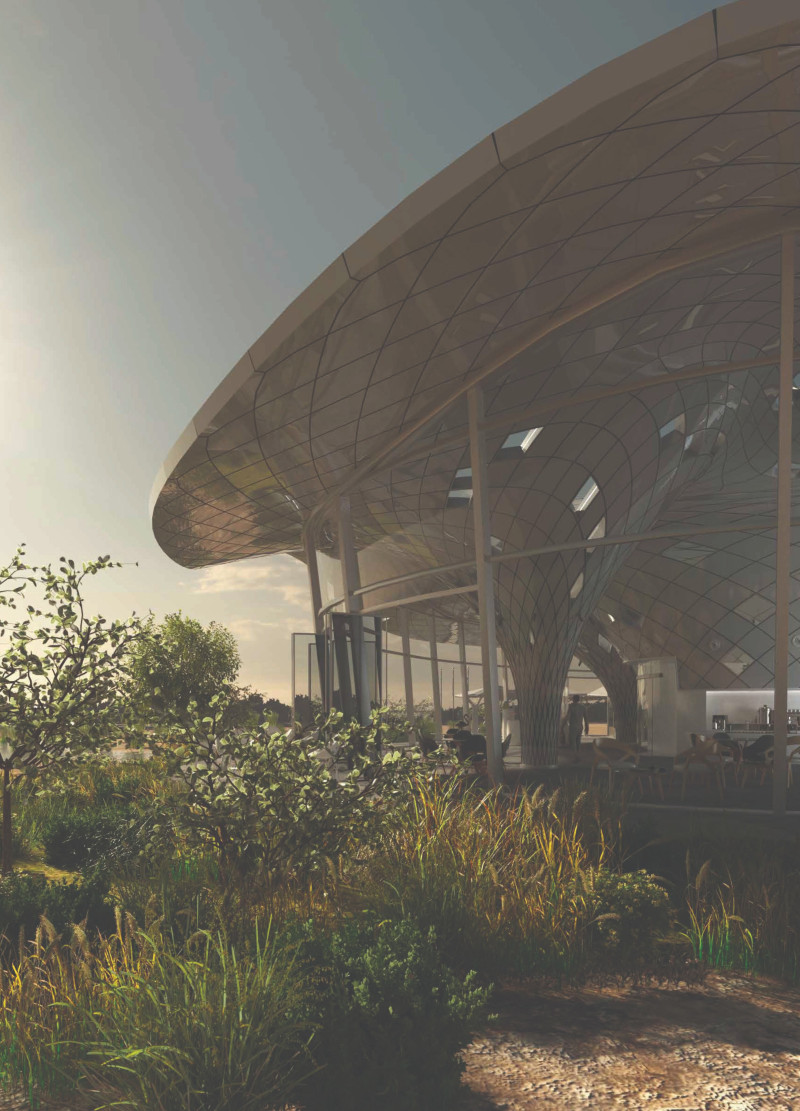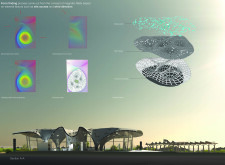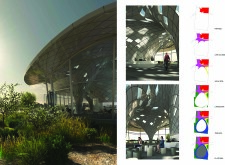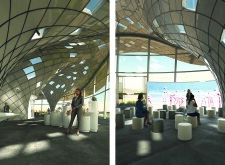5 key facts about this project
The Flamingo Canopy project is located in the Al Wathba Wetland Reserve in Abu Dhabi, a region known for its diverse wildlife, particularly the flamingos that migrate there each year. The visitor center is designed to reflect the essence of these birds, taking inspiration from their unique ability to balance on one leg. The overall design emphasizes connection to the natural world, allowing guests to engage with the environment in a meaningful way.
Design Concept
The concept focuses on balance and stability, attributes inherent to flamingos. The design represents the bird's one-legged stance through a vertical form that conveys both strength and grace. This interpretation fosters a visual link between the building and its surroundings, celebrating the delicate equilibrium found in nature.
Form Finding Process
The design process incorporates external elements such as site access and wind direction, shaping the building's form. By considering these factors, the layout encourages a relationship with the landscape, ensuring that the structure interacts with its environment. Thoughtful planning allows for smooth movement throughout the visitor center, enhancing the overall experience for guests.
Materiality
Materials for the Flamingo Canopy include glass panels and GRP, or Glass Reinforced Plastic panels. Glass provides transparency, allowing ample light to flow into the space while providing views of the wetlands outside. GRP offers a lightweight quality, adding durability to the building. Together, these materials support the design’s intention of merging with the surrounding ecosystem.
Spatial Dynamics
The structure showcases an engaging mix of solid and open spaces, creating a rhythm that guides visitors through the center. Access points are carefully positioned to facilitate movement and interaction with the environment. This thoughtful arrangement emphasizes both functionality and environmental awareness, allowing users to experience the site’s natural beauty from different angles. Ultimately, the design invites reflection on the relationship between architecture and nature, creating a space that honors the habitat of the flamingos and enhances visitor engagement.























































